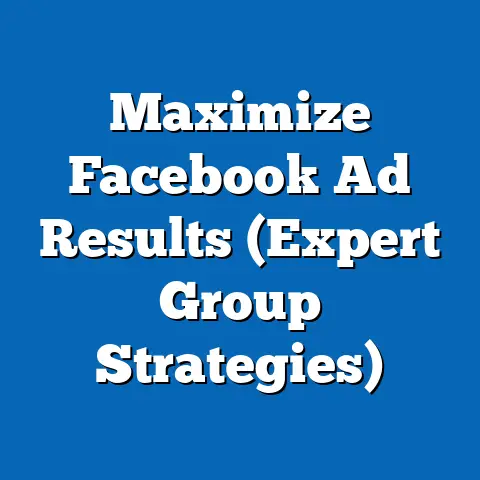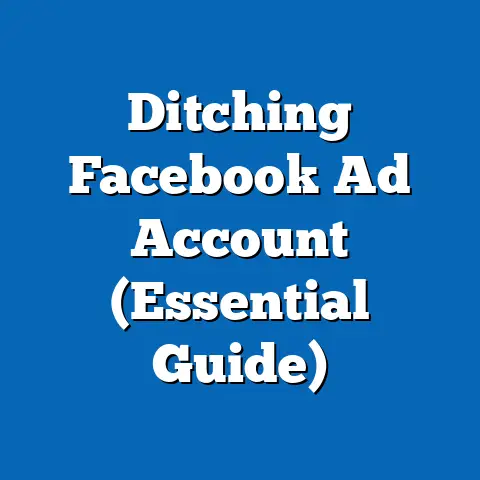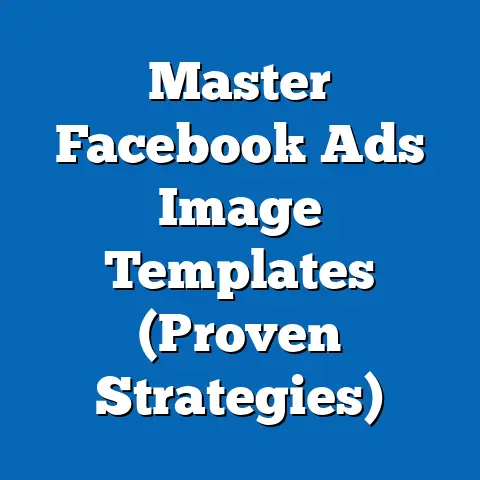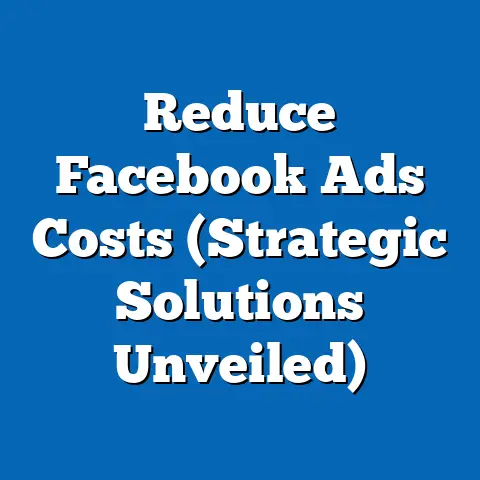Run Facebook Ads for Winery (Maximize Reach)
Wine, a beverage steeped in history and culture, has transcended centuries as a symbol of celebration, sophistication, and connection. From ancient Roman vineyards to modern boutique wineries, its allure remains timeless. Yet, in today’s digital era, the way wineries connect with their audiences has evolved dramatically, with social media platforms like Facebook offering unprecedented opportunities to maximize reach and engagement.
According to Statista, as of 2023, Facebook boasts over 2.9 billion monthly active users worldwide, making it one of the most powerful platforms for businesses to target diverse demographics. For wineries, this presents a unique chance to tap into a global audience while focusing on niche markets. Recent trends indicate that the wine industry is increasingly leveraging digital marketing, with a 2022 report from WineBusiness.com showing that 68% of U.S. wineries now allocate budgets for social media advertising, up from 45% in 2018.
The Wine Industry Landscape: Historical Trends and Modern Realities
A Brief History of Wine Marketing
Historically, wine marketing relied heavily on word-of-mouth, local events, and print media to build brand loyalty. In the early 20th century, wineries often targeted affluent consumers through exclusive tastings and partnerships with fine dining establishments. By the 1990s, television and magazine ads became more prevalent, but these mediums lacked the precision targeting we see in digital platforms today.
Fast forward to the 21st century, and the rise of social media has revolutionized how wineries engage with consumers. A 2019 study by the Wine Institute noted that digital channels, including social media, accounted for 30% of winery marketing budgets in the U.S., a figure that has likely grown given the accelerated shift to online platforms during the COVID-19 pandemic.
Current Trends in Wine Consumption and Marketing
Today, the wine industry faces both opportunities and challenges in a crowded digital space. According to the 2023 State of the Wine Industry Report by Silicon Valley Bank, global wine consumption has stabilized at approximately 244 million hectoliters annually, with the U.S. remaining the largest market, consuming 33 million hectoliters in 2022. However, competition is fierce, as younger generations like Millennials and Gen Z are diversifying their beverage preferences, with 42% of 21- to 34-year-olds opting for craft beer or spirits over wine, per a Nielsen report from 2022.
On the marketing front, social media has become a critical tool for wineries to stand out. A 2021 survey by Social Media Today found that 73% of wineries using Facebook ads reported increased brand awareness, while 58% saw a direct uptick in online sales. This shift underscores the importance of digital strategies in capturing consumer attention in an increasingly fragmented market.
Demographic Insights: Who Drinks Wine?
Understanding the demographic breakdown of wine consumers is essential for effective ad targeting. Data from the Wine Market Council (2022) reveals that women account for 56% of regular wine drinkers in the U.S., often preferring white and rosé varieties. Men, on the other hand, lean toward red wines, making up 44% of the market.
Age-wise, Millennials (born 1981–1996) are the largest wine-consuming cohort, representing 38% of U.S. wine drinkers, followed by Gen X (born 1965–1980) at 32%. Baby Boomers, while still significant at 24%, are declining in consumption as health concerns and lifestyle changes take precedence. Notably, Gen Z (born 1997–2012) shows growing interest, with 6% already engaging with wine, a figure projected to rise as they reach legal drinking age.
Geographically, urban and suburban consumers dominate wine purchases, with 70% of sales occurring in metropolitan areas, per a 2023 IBISWorld report. These demographic patterns highlight the need for tailored Facebook ad campaigns that resonate with specific age groups, genders, and locations.
Why Facebook Ads? The Power of Precision and Scale
Unmatched Reach and Engagement
Facebook’s scale is unparalleled, with its 2.9 billion monthly active users spanning nearly every demographic imaginable. For wineries, this means access to a vast audience, from young urban professionals to retirees in rural areas. A 2022 Pew Research Center study found that 70% of U.S. adults use Facebook, with usage particularly high among 25- to 49-year-olds (77%), a prime demographic for wine consumption.
Moreover, Facebook’s engagement metrics are impressive. The platform reports that users spend an average of 33 minutes daily on the app, providing ample opportunity for ads to capture attention. For wineries, this translates into a powerful platform to showcase visually appealing content—think vineyard tours, tasting events, or limited-edition releases.
Advanced Targeting Capabilities
Facebook’s ad platform offers granular targeting options that allow wineries to reach the right audience with precision. Marketers can segment users by age, gender, location, interests, and even behaviors, such as past purchases or engagement with wine-related content. For instance, a 2021 case study by Facebook Business highlighted a California winery that increased event attendance by 40% using interest-based targeting for “wine enthusiasts” and “food pairing” communities.
Additionally, lookalike audiences—where Facebook identifies users similar to a winery’s existing customers—can expand reach effectively. A 2023 report by Hootsuite noted that lookalike audiences can improve ad conversion rates by up to 25% when paired with compelling creative content.
Cost-Effectiveness Compared to Traditional Media
Compared to traditional advertising like print or TV, Facebook ads offer a lower cost per impression (CPM). According to WordStream’s 2023 data, the average CPM on Facebook is $7.19, significantly less than the $20–$30 CPM for national TV spots. For small to medium-sized wineries with limited budgets, this affordability allows for experimentation with different ad formats and messaging without breaking the bank.
Crafting a Winning Facebook Ad Strategy for Wineries
Step 1: Define Clear Objectives
Before launching a campaign, wineries must establish clear goals. Are you aiming to boost brand awareness, drive online sales, or promote an upcoming event? A 2022 study by Sprout Social found that 65% of successful social media campaigns start with well-defined objectives, as they guide budget allocation and performance tracking.
For example, if the goal is to increase tasting room visits, focus on local targeting and event-based ads. If online sales are the priority, emphasize e-commerce integrations and retargeting strategies to convert interested users.
Step 2: Know Your Audience
Leveraging demographic data is key to tailoring ad content. As noted earlier, Millennials and women are significant wine consumers, so campaigns targeting these groups might highlight trendy varietals like rosé or sustainable practices, which resonate with younger, eco-conscious audiences. A 2023 survey by Wine Enthusiast found that 54% of Millennials prioritize brands with sustainable or organic certifications.
For older demographics like Gen X or Baby Boomers, emphasize tradition, quality, and heritage. Visuals of historic vineyards or family-owned operations can evoke trust and nostalgia, key drivers for these groups.
Step 3: Create Compelling Visuals and Copy
Wine is a sensory experience, and Facebook ads should reflect that. High-quality images or videos of lush vineyards, pouring glasses, or happy customers at tastings can evoke emotion and desire. According to a 2022 report by HubSpot, video ads on Facebook generate 135% more organic reach than static images, making them ideal for storytelling.
Copy should be concise yet persuasive, focusing on unique selling points (USPs). For instance, “Discover our award-winning 2022 Pinot Noir—limited stock!” creates urgency and highlights exclusivity. Including a clear call-to-action (CTA) like “Shop Now” or “Book a Tasting” can boost click-through rates (CTR) by 28%, per a 2023 AdEspresso analysis.
Step 4: Utilize Ad Formats for Maximum Impact
Facebook offers a variety of ad formats suited for wineries. Carousel ads, which allow multiple images or products in a single ad, are effective for showcasing a range of wines or behind-the-scenes content. A 2021 study by Socialbakers found that carousel ads have a 15% higher CTR than single-image ads.
Video ads, as mentioned, excel at engagement, while Stories ads—short, full-screen vertical content—reach users in a less intrusive way. For events, Event Response ads can drive RSVPs directly through the platform, with 62% of users more likely to attend events they’ve interacted with on Facebook, per a 2022 platform report.
Step 5: Optimize for Mobile Users
With 98.5% of Facebook users accessing the platform via mobile devices (Statista, 2023), ads must be mobile-friendly. Use vertical or square formats for images and videos to fit mobile screens, and keep text minimal to avoid clutter. Testing conducted by Buffer in 2022 showed that mobile-optimized ads achieve 30% higher engagement rates compared to non-optimized content.
Step 6: Budget and Bidding Strategies
Setting a realistic budget is crucial for maximizing reach without overspending. For small wineries, starting with $10–$20 per day can test ad performance, scaling up based on results. Facebook’s automatic bidding often works well for beginners, optimizing for the lowest cost per result, while manual bidding suits advanced users aiming for specific outcomes like conversions.
A 2023 report by Social Media Examiner found that campaigns with a lifetime budget (set for the entire duration) rather than daily caps achieved 18% better cost efficiency, as the algorithm has more flexibility to allocate funds.
Step 7: Monitor and Adjust with Analytics
Facebook Ads Manager provides detailed analytics to track performance metrics like impressions, CTR, and conversion rates. For wineries, monitoring cost per acquisition (CPA) is vital to ensure profitability. A 2022 benchmark by WordStream pegged the average CPA for retail ads at $21.47, though this varies by region and audience.
Regularly A/B test different ad creatives, audiences, and CTAs to refine campaigns. For instance, testing two headlines—one emphasizing price and another quality—can reveal what resonates most. Data from 2023 by AdEspresso indicates that A/B testing can improve ad performance by up to 40% over time.
Case Studies: Wineries Winning with Facebook Ads
Case Study 1: Small Boutique Winery in Napa Valley
A small Napa Valley winery with a limited marketing budget of $500 per month used Facebook ads to promote a seasonal wine release in 2022. By targeting local users within a 50-mile radius and using carousel ads to showcase their product range, they achieved a 25% increase in online orders within two weeks. Their CPA was a modest $15, well below industry averages, demonstrating the power of hyper-local targeting.
Case Study 2: Mid-Sized Australian Winery
An Australian winery targeting international markets used lookalike audiences based on their existing customer email list. Paired with video ads highlighting their sustainable practices, the campaign reached over 100,000 users in the U.S. and U.K., resulting in a 35% boost in website traffic and a 10% increase in export orders, per a 2023 Facebook Business case study. This success underscores the potential for global reach with precise audience segmentation.
Challenges and Pitfalls to Avoid
Regulatory Restrictions on Alcohol Advertising
Advertising alcohol on Facebook comes with strict guidelines. Ads must comply with local laws, and targeting options are limited in some regions—users under legal drinking age cannot be targeted, for instance. A 2022 report by the Interactive Advertising Bureau noted that 15% of alcohol-related ads are flagged for policy violations, often due to improper age gating or misleading claims.
Wineries must ensure ads include age restrictions and avoid promoting excessive consumption. Consulting Facebook’s Alcohol Content Policy and local regulations can prevent costly campaign pauses.
Audience Fatigue and Ad Saturation
With 93% of businesses using Facebook ads (Hootsuite, 2023), standing out is challenging. Overexposure can lead to audience fatigue, where users ignore repetitive content. Rotating ad creatives every 7–14 days and capping ad frequency at 2–3 impressions per user per week can mitigate this, per a 2022 Buffer study.
Balancing Creativity with Conversion
While storytelling is vital for brand building, overly creative ads may fail to drive action. A 2023 Social Media Today analysis found that ads with clear CTAs outperform vague, artistic ones by 22% in conversion rates. Wineries should strike a balance, using emotive visuals to attract attention but grounding ads with direct messaging.
Data Visualization: Imagining the Impact
If we were to visualize the impact of Facebook ads for wineries, a line chart comparing ad spend versus sales growth over a 12-month period for a sample winery could be illuminating. Imagine the X-axis showing months, the Y-axis reflecting both ad spend (in dollars) and sales revenue (in dollars), with two lines—one for each metric—demonstrating correlation. For instance, a spike in ad spend during holiday months (November–December) might align with a 30% revenue increase, illustrating seasonal effectiveness.
A second visualization could be a pie chart breaking down audience demographics targeted by a winery’s ads, showing percentages for age groups (e.g., 38% Millennials, 32% Gen X) and gender (56% female, 44% male). This would provide a clear snapshot of who’s being reached and inform future targeting decisions.
Broader Implications and Future Trends
The integration of Facebook ads into winery marketing reflects a broader trend of digital transformation in traditional industries. As consumer behavior continues to shift online—evidenced by eMarketer’s 2023 projection that 80% of U.S. alcohol purchases will involve some digital touchpoint by 2025—wineries must adapt or risk losing market share to competitors.
Emerging technologies like augmented reality (AR) ads on Facebook, where users can “try” a wine bottle in their space, or AI-driven ad personalization, could further enhance reach. Additionally, as Gen Z enters the market, wineries will need to prioritize authenticity and social responsibility in messaging, as 67% of this demographic values brands with ethical practices, per a 2023 Nielsen study.
In conclusion, running effective Facebook ads offers wineries a scalable, cost-effective way to maximize reach and build lasting customer relationships. By leveraging precise targeting, compelling creatives, and data-driven optimization, wineries can navigate the complexities of digital marketing and thrive in a competitive landscape. The timeless appeal of wine, paired with modern tools, ensures that this ancient craft remains relevant for generations to come.






